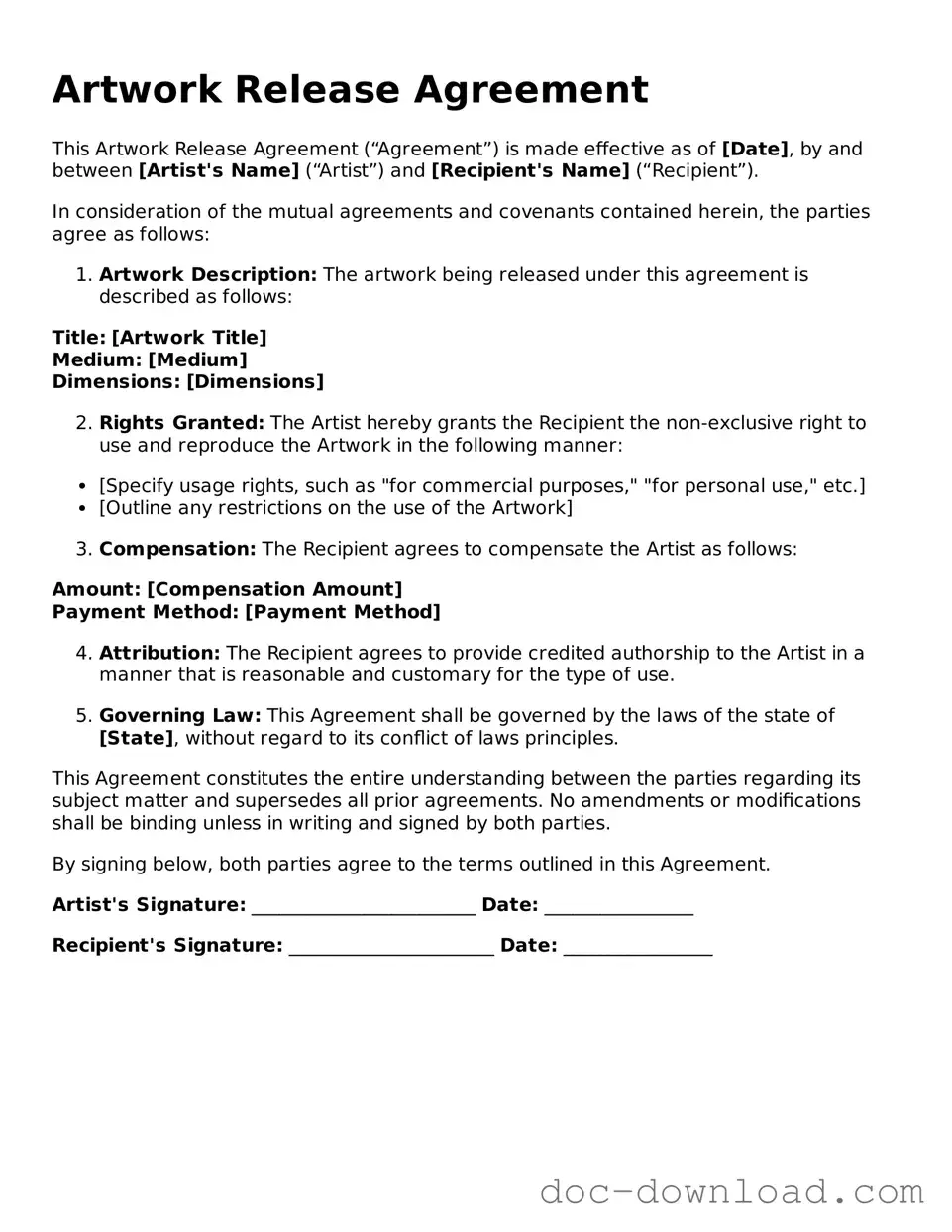The Model Release form serves a similar purpose to the Artwork Release form, as both documents are designed to secure permission from individuals for the use of their likeness or image in various media. While the Artwork Release focuses on visual art, the Model Release typically pertains to photographs or videos featuring a person. Both forms ensure that the creator has the legal right to use the images without the risk of infringing on the rights of the individuals depicted. By obtaining a signed Model Release, artists and photographers can protect themselves from potential legal disputes arising from unauthorized use.
The Copyright Assignment Agreement is another document that shares similarities with the Artwork Release form. This agreement is used when an artist or creator transfers ownership of their copyright to another party, often a publisher or company. Like the Artwork Release, the Copyright Assignment Agreement clarifies the rights of each party involved. It ensures that the new copyright holder has the authority to use, reproduce, and distribute the artwork as specified in the agreement, thereby minimizing misunderstandings about ownership and usage rights.
The Licensing Agreement also parallels the Artwork Release form, as it governs the terms under which artwork may be used by another party. In this case, the artist retains ownership of the artwork while granting specific rights to the licensee. This document outlines the scope of use, duration, and any compensation involved. By clearly defining these terms, both parties can avoid potential conflicts regarding the use of the artwork, similar to how the Artwork Release form protects the rights of the creator.
When dealing with vehicle transactions, it's important to understand the relevant legal documents that protect both the buyer and seller. The Vehicle Release of Liability form, much like various release agreements in the creative fields, serves as a crucial tool to clarify responsibilities. This form ensures that sellers are shielded from any future claims once the vehicle is sold, similar to how a Hold Harmless Agreement protects parties in different contexts. Without proper documentation, both buyers and sellers may face uncertainties that could lead to disputes down the line.
The Non-Disclosure Agreement (NDA) can be compared to the Artwork Release form in that both documents aim to protect the interests of the creator. While the Artwork Release focuses on the use of visual art, an NDA is designed to safeguard confidential information shared between parties. In creative industries, artists may need to disclose their ideas or concepts to clients or collaborators. An NDA ensures that this information remains confidential, preventing unauthorized use or disclosure, much like the way the Artwork Release secures the artist's rights to their work.
Finally, the Commission Agreement is akin to the Artwork Release form in that it outlines the terms under which an artist is commissioned to create a specific piece of artwork. This document details the expectations, payment, and ownership rights of the finished work. Like the Artwork Release, the Commission Agreement protects the rights of both the artist and the client, ensuring that all parties are aware of their responsibilities and the intended use of the artwork. By establishing these terms upfront, the likelihood of disputes is significantly reduced.
